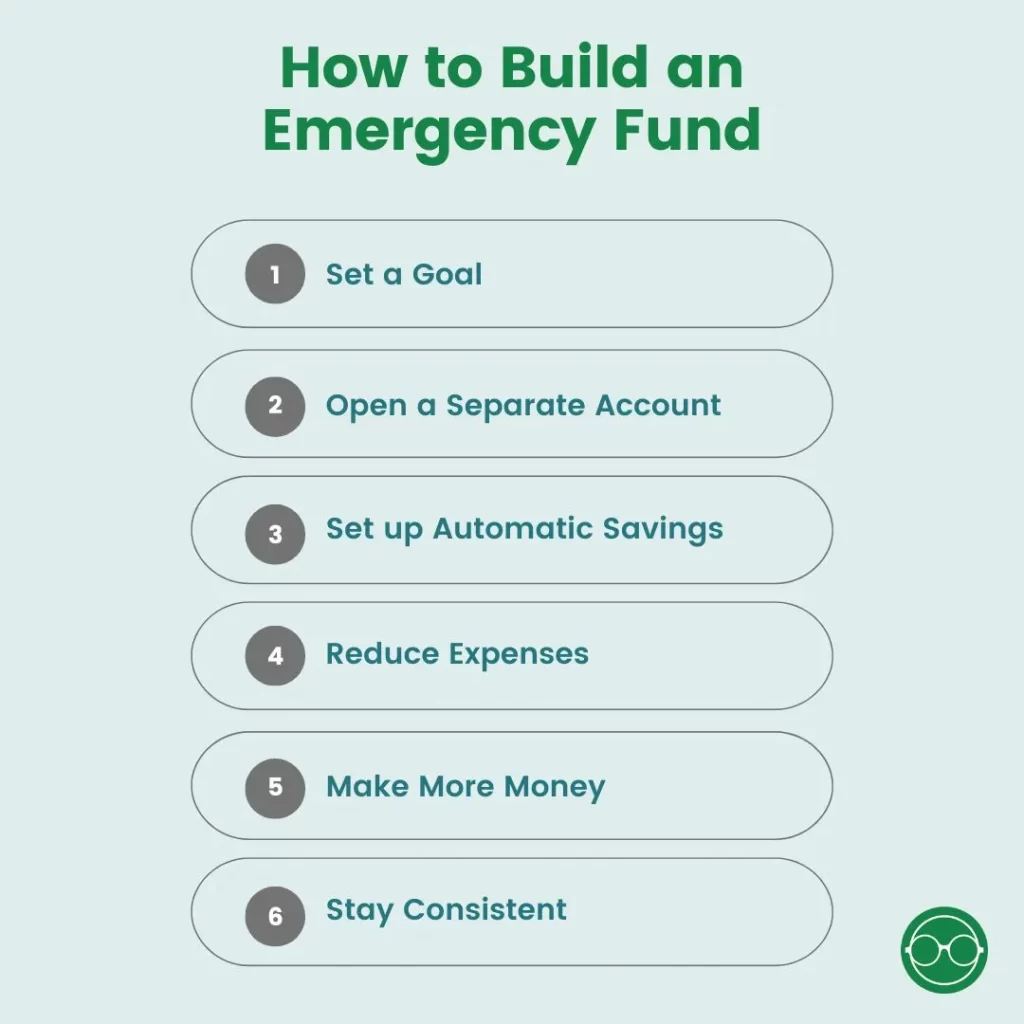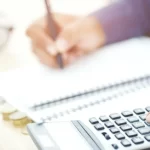This post may contain affiliate links. We may receive compensation when you click on links to those products at no additional cost to you. Read our full disclosure here.
Emergencies can happen anytime, whether it is a job loss, medical emergency, or unexpected home repair. An emergency fund is a separate account that is liquid (meaning that you can withdraw cash quickly) and easily accessible where you keep your money reserved for unexpected situations. The goal of an emergency fund is to provide you with enough cash to cover your expenses for a few months without any income.
In this article, we will guide you through the step-by-step process of how to build an emergency fund.
Key Takeaways
- An emergency fund is a separate account that is liquid and easily accessible where you keep your money reserved for unexpected situations.
- The amount of money you save in your emergency fund should be enough to cover your expenses for at least three to six months.
- To build an emergency fund, you need to set a goal, open a separate account, set up automatic savings, reduce expenses, make more money, and stay consistent.
- Keep your emergency fund in a safe and accessible place, and use it only for unexpected situations
Why Have an Emergency Fund?
According to Consumer Finance, approximately 24% of consumers do not have any savings reserved for unexpected situations, whereas 39% have savings that are less than one month’s worth of their income.
Having an emergency fund is important because life can be unpredictable and unexpected events like losing your job, medical emergencies, or home repairs can happen at any time and cause financial stress if you’re not ready.
If you don’t have savings to cover these expenses, you may have to:
- Incur debt
- Credit cards. Credit card debt is fine only if you know you can pay it off every month
- Payday loans (Avoid this at all costs!)
- Dip into your investment or retirement accounts.
- Selling your investments early means you’re losing the power of compound interest.
- Early withdrawal from retirement accounts may have tax consequences and penalties as well.
An emergency fund can help you avoid these situations and help you be better prepared to handle unexpected events and avoid financial hardship.
How Much Money to Save in the Emergency Fund?
The amount of money you save in your emergency fund should be enough to cover your expenses for at least three to six months.
To calculate this amount, add up your monthly expenses such as rent, utilities, food, transportation, and other essential expenses. Once you have the total amount, multiply it by three to six months, depending on:
- How stable is your job
- How easily transferrable your skills are to find another job
- Your access to capital
- Your risk tolerance
How to Building an Emergency Fund: Step-by-step

1. Set a Goal
The first step in building an emergency fund is to set a goal. Decide on the amount of money you want to save in your emergency fund. This should be based on your monthly expenses and how long you want your emergency fund to last.
It is recommended to save at least three to six months of living expenses in your emergency fund. Make sure the amount is achievable and realistic.
For example, if your monthly expenses are $3,000, you should aim to save between $9,000 to $18,000 in your emergency fund.
2. Open a Separate Account
To avoid mixing your emergency fund with your regular savings or checking account, open a separate account. This will make it easier to track your progress and avoid the temptation to spend money on non-emergency expenses.
What kind of account should an emergency be? I’d recommend choosing either a money market account or a high-yield savings account to keep your emergency fund to earn a little more interest than a regular savings account. Just make sure that the account is liquid and easily accessible.
3. Set up Automatic Savings
Setting up automatic savings can help you reach your emergency fund goal faster. You can set up automatic transfers from your paycheck to your emergency fund account. This way, you don’t have to worry about manually transferring money every month, and you are less likely to spend the money on non-emergency expenses.
For example, if you decide to save $500 every month into your emergency fund, you can set up an automatic transfer of $500 from your paycheck to your emergency fund account until you hit your goal (see point 1).
4. Reduce Expenses
Reducing your expenses can help you save money and reach your emergency fund goal faster. Cut back on unnecessary expenses like eating out, subscriptions, or entertainment. You can also negotiate your bills, shop for cheaper alternatives, or switch to a lower-cost service provider.
For example, you can save money on groceries by meal planning, buying in bulk, and using coupons. You can also save money on utilities by turning off the lights when not in use, using energy-efficient appliances, and adjusting the thermostat.
Learn more about creating a budget here.
5. Make More Money
Consider earning extra income to reach your emergency fund goal faster. You can take on a part-time job, sell items you no longer need, or start a side business. This can help boost your savings and provide additional financial security.
For example, you can earn extra income by freelancing, tutoring, pet sitting, or driving for a ride-sharing service.
Learn more about different ways to make more money here.
6. Stay Consistent
Building an emergency fund takes time and consistency. Make sure you are saving a certain amount of money every month to reach your goal. It is also important to avoid dipping into your emergency fund for non-emergency expenses, like eating out.
For example, if you decide to save $500 every month, make sure you stick to it and don’t skip any payments. You can also track your progress and adjust your strategy if necessary.
Tips for Maintaining your Emergency Fund
- Reevaluate your emergency fund goal: It is essential to reevaluate your emergency fund goal regularly. As your income and expenses change, you might need to adjust the amount you are saving.
- Avoid Temptations: Avoid using your emergency fund for non-emergency expenses. It is crucial to have the discipline to use your emergency fund only for unexpected situations.
- Invest the rest: Once you have reached your emergency fund goal, consider investing the excess amount. You can choose to invest in low-risk investments like CDs or bonds.
- Stay Prepared: Keep your emergency fund in a safe and accessible place. Make sure you have quick access to your money in case of an emergency.
When to Use Your Emergency Fund
An emergency fund is meant to be used during unexpected situations when you need immediate access to cash. Here are some examples of when to use your emergency fund:
- Job Loss
- Medical Emergency
- Home or Car Repair
- Natural Disaster
- Unexpected Travel
Remember, using your emergency fund should be a last resort. Only use it for unexpected situations when you have no other source of income or savings to cover your expenses.
Final Thoughts
Building an emergency fund is a crucial step in establishing your financial foundation. By following these steps on how to build an emergency fund, you can start building your emergency fund today. Remember to stay consistent and disciplined to reach your emergency fund goal.
FAQs
Can I use my credit card as an emergency fund?
No, it is not recommended to use your credit card as an emergency fund. It can lead to a cycle of debt, making it difficult to pay off the balance.
Should I save for an emergency fund or pay off debt first?
It depends on your individual financial situation. If you have high-interest debt, such as credit card debt, it may be beneficial to focus on paying off that debt first. This is because the interest on the debt may be higher than the interest earned on your emergency fund savings.
However, it’s important to have at least a small emergency fund in place even while paying off debt. This can prevent you from having to use credit cards or take out loans to cover unexpected expenses.
This post may contain affiliate links. We may receive compensation when you click on links to those products at no additional cost to you. Read our full disclosure here.






